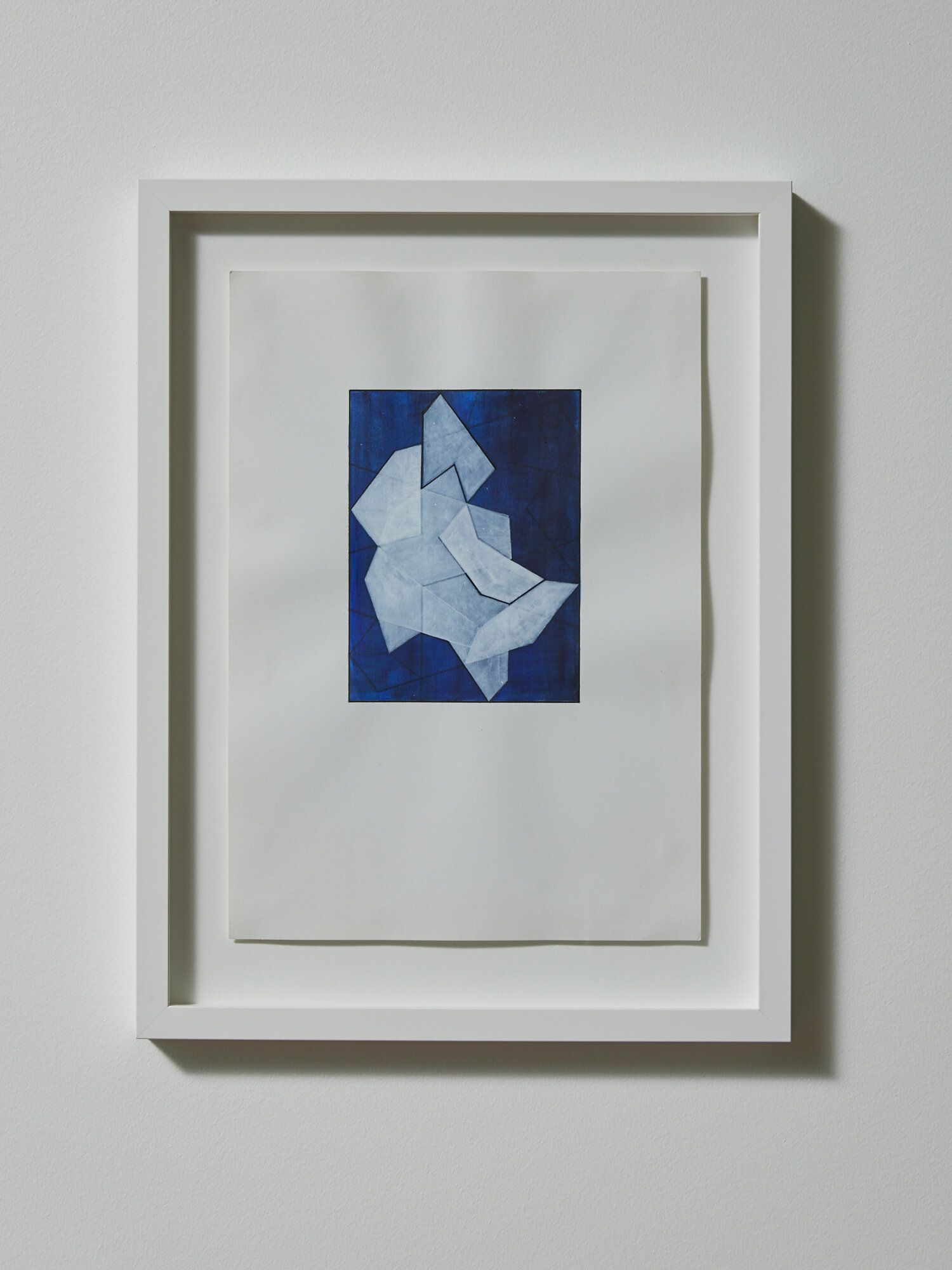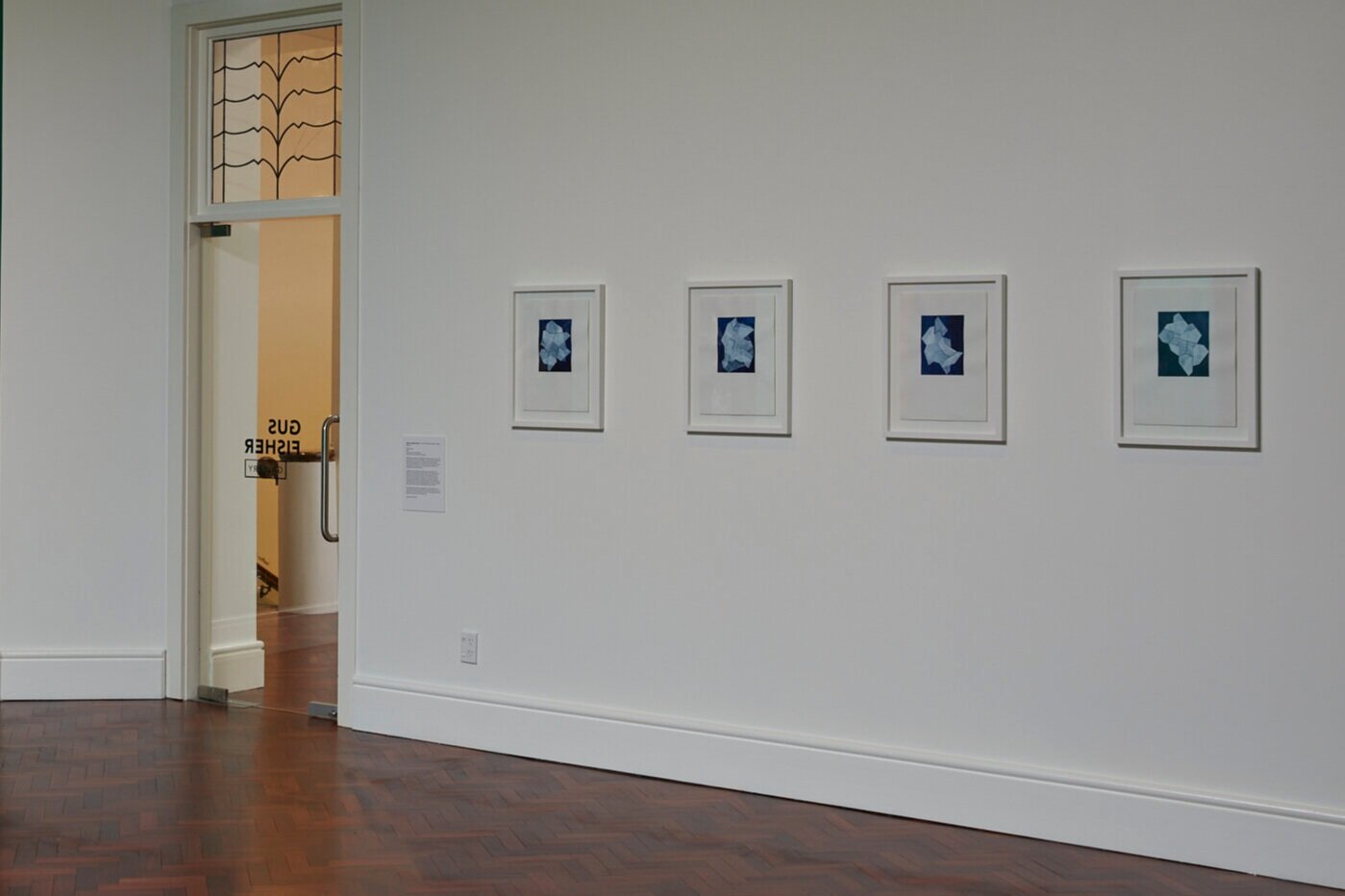Pale Blue Dot
2016 - 2021.
Pale Blue Dot series.
Materials: Acrylic, pen and ink on paper. Collection of the Artist.
The Pale Blue Dot series explores the fragility of nations, borders, global migration and the environment seen from afar. The paintings relate to the overview effect, a cognitive shift in awareness that has been reported by astronauts during spaceflight while viewing Earth from outer space. Seeing the Earth as a pale blue dot hanging in a void, prompts people to think of it as something that needs protecting. That physical and conceptual distance of looking down at the earth and seeing its fragility may help people understand that issues created by humanity now need to be addressed in a more holistic way.
The geometric patterns that inspire the paintings within the Pale Blue Dot series are influenced by the geometry patterns depicted on the Topkapi Scroll. The polygonal paintings reference a rich history of mathematics and architectural design that has come from the Middle East and which has influenced design and architecture in the modern-day. The patterns are reminiscent of the eleventh to sixteenth-century geometric patterns found in that scroll held in the Topkapi Palace museum in Istanbul, and which were the basis of the tile designs found in mosques around the world. The scroll also references the relationship between science and art, with theories of ornament, abstraction, aesthetics and vision. The Topkapi’s scroll’s drawings often consist of repeat units meant to be multiplied by symmetry. They are all geometric patterns generated by three types of grid systems: squared, triangulated, and composite radial (polygonal). These sentiments of valuing knowledge systems, sciences, history, arts and culture that global migration across geographical borders can bring to new cultures and societies are just as relevant now, as it was then, and into our future as a global civilisation. May it be through migration by choice or imposed migration.
Alongside these paintings is an accompanying interview. The following text is comprised of excerpts taken from a conversation between Shahriar A. and an aerospace engineer in early 2016. The themes addressed were an influence to create the series of paintings. This conversation primarily took place over multiple emails and had evolved into a Q & A format. You can view this interview here.
The Pale Blue Dot series of paintings is ongoing and will next be exhibited at The Suter Art Gallery in Nelson, mid-2021.
Pale Blue Dot, 2019. No. 8.
Pale Blue Dot, 2019. No. 7
Pale Blue Dot, 2019. No. 6
Pale Blue Dot, 2019. No. 9
Pale Blue Dot, 2016. No. 4
Pale Blue Dot, 2016. No. 2
Pale Blue Dot, 2016. No. 3
Pale Blue Dot, 2016. No. 1
Pale Blue Dot, 2016. No. 5
Installation view of the the ‘Pale Blue Dot’ series exhibited as a part of the group exhibition ‘The Hive Hums With Many Minds’. Curated by Bruce E. Philips, Te Tuhi, Auckland, 2016.
Installation view of the the ‘Pale Blue Dot’ series exhibited as a part of the group exhibition ‘The Shouting Valley. Curated by Lisa Beauchamp, Gus Fisher Gallery, Auckland, 2019.
Installation view of the the ‘Pale Blue Dot’ series exhibited as a part of the group exhibition ‘The Shouting Valley. Curated by Lisa Beauchamp, The Physics Room, Christchurch, 2019.
Radio interview at the Physics Room, Christchurch, 2020 - Shahriar Asdollah-Zadeh discusses the Pale Blue Dot project alongside his wider art practice and themes of research.
An interview with artist Shahriar Asdollah-Zadeh and Director of the Physics Room Jamie Hanton.
All images on this page are documentation images photographed by Sam Hartnett. Courtesy of the Gus Fisher Gallery and Te Tuhi.











